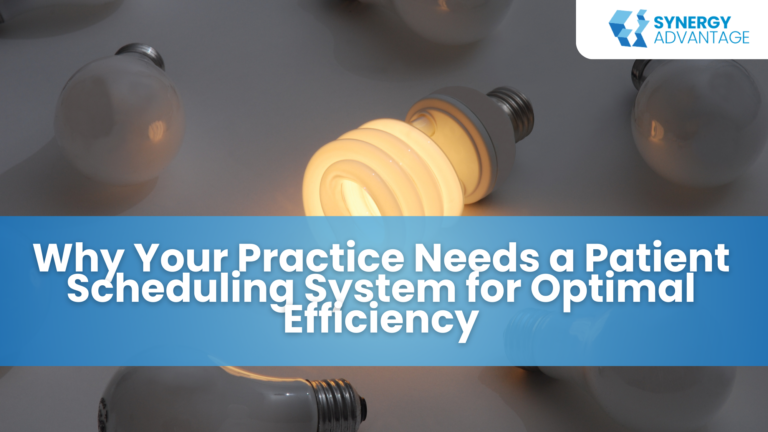In today’s fast-paced healthcare environment, efficiency is crucial for patient satisfaction and practice success. As the demand for high-quality care grows, many medical practices face the challenge of managing patient appointments effectively. This is where a robust scheduling system comes into play.
By streamlining the appointment process, reducing wait times, and optimizing resource allocation, such systems not only enhance the patient experience but also improve the overall operational efficiency of a practice. In this article, we will explore the key reasons why adopting an efficient scheduling system is essential for your practice and how it can transform how you manage patient interactions and resources.
Key Takeaways
- Clinic scheduling systems simplify setting appointments, curtail waiting times, and contribute to patient satisfaction. They assist clinics in optimizing resource utilization.
- Automated platforms offer the convenience of self-booking to patients, minimize skipped appointments through reminders, and streamline office tasks. They also ensure the safekeeping of data.
- These systems help limit scheduling mistakes, enhance staff efficiency by reducing manual work, and foster better communication, leading to contented patients.
- Custom solutions like Synergy Advantage provide adaptable and intuitive scheduling tools catering to varying clinic requirements. They seamlessly integrate with other office software.
- An effective scheduling system can save costs by minimizing patient no-shows and facilitating smoother clinic operations.
Benefits of a Patient Scheduling System

A patient scheduling system effectively manages bookings, reducing mistakes and scheduling conflicts. Its key features, such as automatic reminders and open slot checks, significantly decrease double-booking and missed appointments. Consequently, patient attendance increases as fewer forget their appointments, and online booking minimizes the need for phone calls, streamlining appointment management.
Automated scheduling also reduces patient wait times by enabling quick access to earlier slots when cancellations occur. The Fast Pass feature improved attendance rates from 76.7% to 79.8%. No-shows, which cost the healthcare industry $150 billion annually, are mitigated by SMS reminders that ease the rescheduling process and enhance utilization of appointment slots, especially during evenings.
Beyond improving scheduling, these systems alleviate staff manual workload, allowing them to focus more on patient interactions than paperwork. By automating reminders, no-show rates decline, optimizing clinic efficiency and revenue. Additionally, innovative tools quickly fill open schedule slots, enhancing workflow and employee satisfaction. Happier staff will likely remain in their positions longer, reducing hiring and training needs.
Improving Communication and Patient Satisfaction
Improving communication between staff and patients is essential. Patient communication software enhances clarity and ease of interaction, fostering understanding and satisfaction on both sides. The system utilizes secure messaging across various channels, effectively reducing missed appointments through timely reminders. Data shows that this approach significantly benefits patients and helps healthcare providers prioritize care efficiently.
Effective scheduling is crucial for patient satisfaction, correlating with adherence to care plans and better health outcomes. A well-organized schedule minimizes wait times, leading to a more positive experience for patients while reducing stress for staff. Collaborative scheduling techniques ensure that doctors maximize their time, avoiding mix-ups and overbookings, resulting in quicker patient visits and improved health outcomes.
Additionally, optimizing healthcare providers’ time is essential. The system effectively allocates work by analyzing no-show rates and staff availability, minimizing downtime and travel between locations. This strategic planning also prevents staff burnout by avoiding back-to-back appointments that are too far apart. Utilizing data-driven strategies ensures patient care is provided efficiently without overloading the team. Flexible scheduling allows the plan to adapt quickly to changes, maintaining an optimal workflow without unnecessary interruptions.
Tailored Solutions by Synergy Advantage

Medical institutions face unique challenges, particularly in scheduling appointments. Synergy Advantage addresses these issues by offering customized patient scheduling solutions tailored to the specific needs of various medical specialties. Their platform facilitates digital appointment booking and integrates seamlessly with electronic health records (EHR), enhancing overall productivity.
Personalized systems reduce errors by 55% and increase clinics’ capacity to accommodate more patients. Additionally, automated reminders have decreased no-show rates from approximately 21% to just above 7%, leading to more efficient clinic operations and greater satisfaction among staff and patients. Synergy Advantage provides a user-friendly platform that integrates well with existing management systems, allowing patients to book appointments online anytime.
Available 24/7, the platform keeps everyone informed in real-time and enables over 60% of patients to schedule appointments without phone calls, effectively reducing missed visits and saving costs for healthcare facilities. The seamless integration with existing systems ensures that healthcare practices can effortlessly utilize Synergy Advantage’s scheduling features. The inclusion of EHR-integrated scheduling adds an impressive 2,576 hours annually for patient consultations, allowing healthcare providers to maximize their time and efficiency.
Conclusion
A patient scheduling system enhances office efficiency by verifying insurance eligibility and sending appointment reminders, allowing staff to focus on welcoming patients and managing office tasks. Features like reporting and payment processing save time and reduce costs while improving patient engagement and care management. The demand for such software is increasing, with chatbots facilitating appointment bookings, streamlining operations in healthcare settings.
This technology fosters greater patient involvement and helps administrators manage schedules more effectively, leading to fewer mistakes and shorter wait times. These tools improve operational efficiency, reduce costs, and enhance patient satisfaction. Recognizing the importance of patient scheduling systems, healthcare leaders should consider Synergy Advantage.
This solution optimizes clinic operations with tools for insurance verification and appointment reminders, simplifying workload management. Synergy Advantage offers a centralized appointment tracking platform, promoting better staff collaboration. Its flexible pricing makes it accessible for practices of varying sizes. Furthermore, the growing use of chatbots for appointment bookings aligns with contemporary healthcare scheduling needs.
FAQs
1. What is a patient scheduling system?
A scheduling system is a tool that helps medical practices manage appointments. It can enhance efficiency and improve the overall patient experience.
2. Why does my practice need a patient scheduling system?
Your practice could benefit from such a system because it streamlines appointment management, reduces errors, and optimizes resource use. It makes your service more efficient.
3. How does this system contribute to optimal efficiency?
The system automates the process of booking, rescheduling, or canceling appointments, saving time for staff and patients. This leads to smoother operations and better resource allocation in your practice.
4. Is implementing a patient scheduling system complex?
No, it’s not complex at all. Most systems are user-friendly, with simple interfaces designed for ease of use by staff members and patients.
References
Chung S, Martinez MC, Frosch DL, Jones VG, Chan AS. Patient-Centric Scheduling With the Implementation of Health Information Technology to Improve the Patient Experience and Access to Care: Retrospective Case-Control Analysis. J Med Internet Res. 2020;22(6):e16451. Published 2020 Jun 10. doi:10.2196/16451 https://pmc.ncbi.nlm.nih.gov/articles/PMC7315363/
Kaplan G, Lopez MH, McGinnis JM, editors. Transforming Health Care Scheduling and Access: Getting to Now. Washington (DC): National Academies Press (US); 2015 Aug 24. 1, Improving Health Care Scheduling. Available from: https://www.ncbi.nlm.nih.gov/books/NBK316135/

